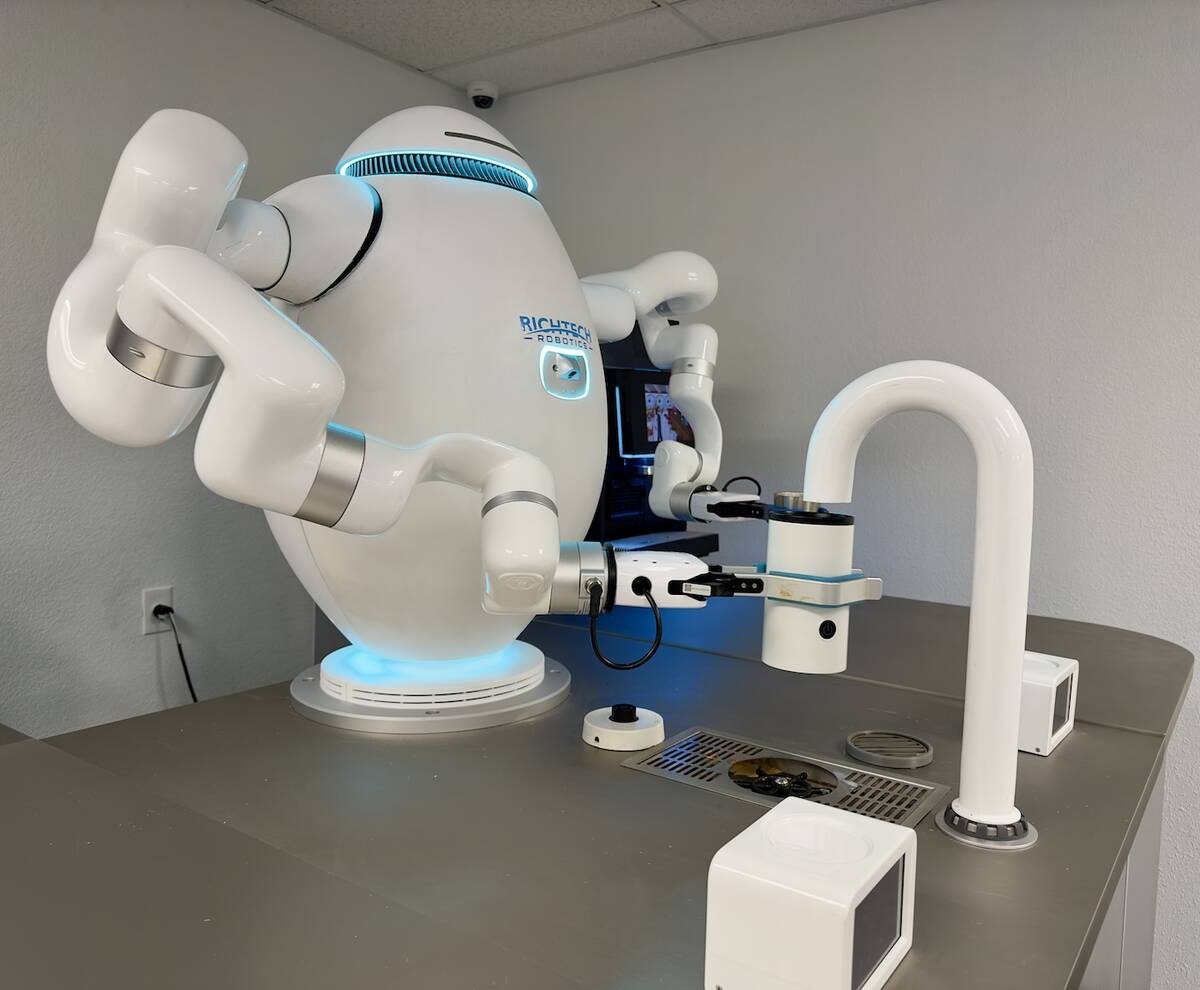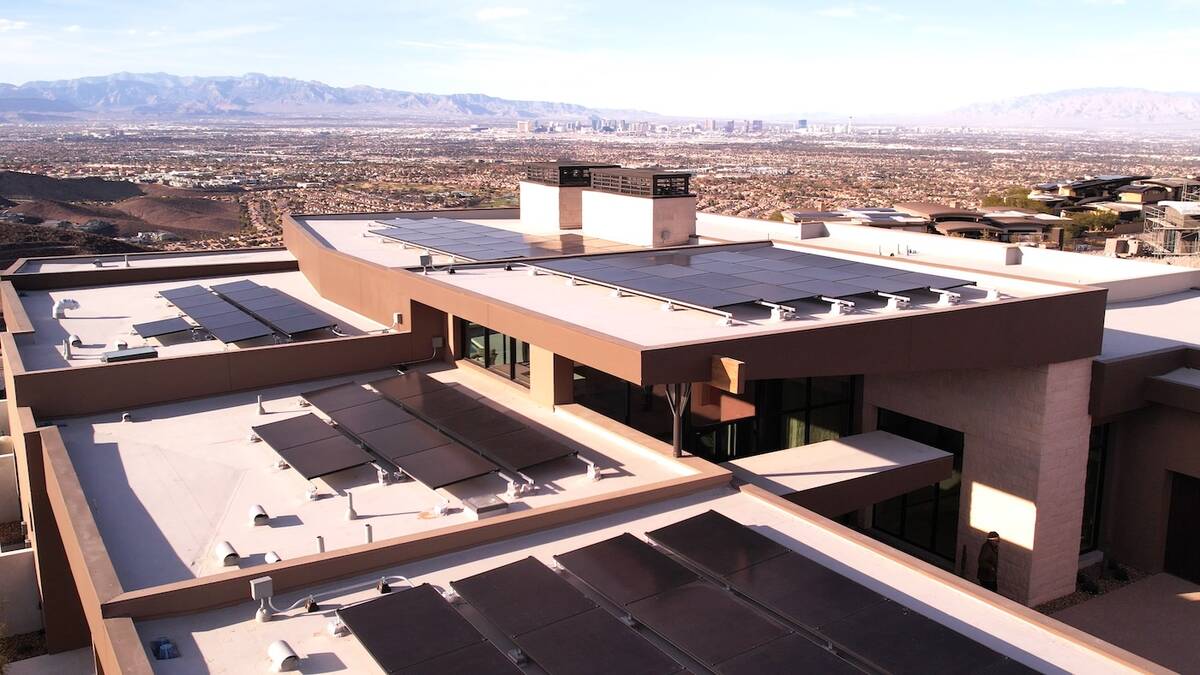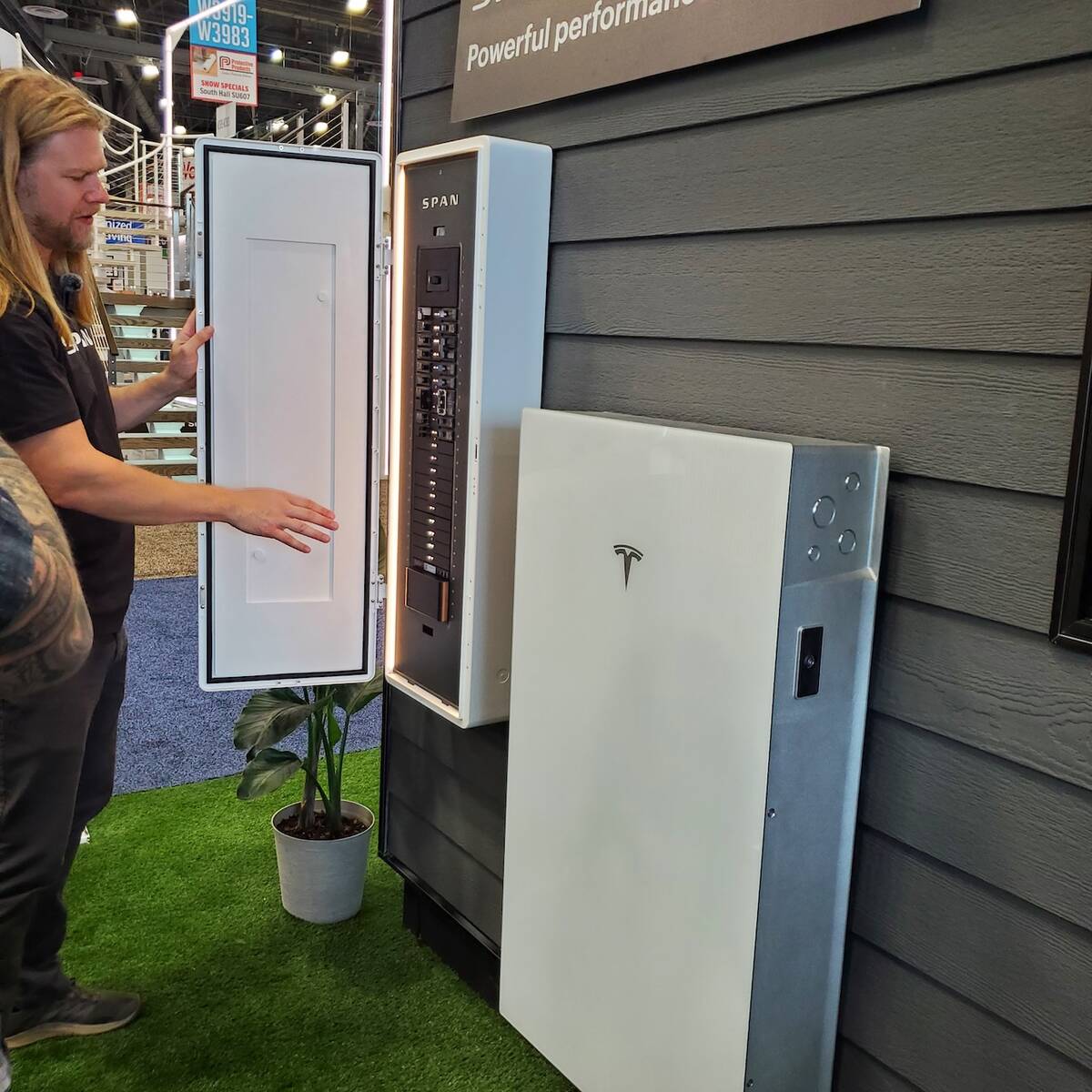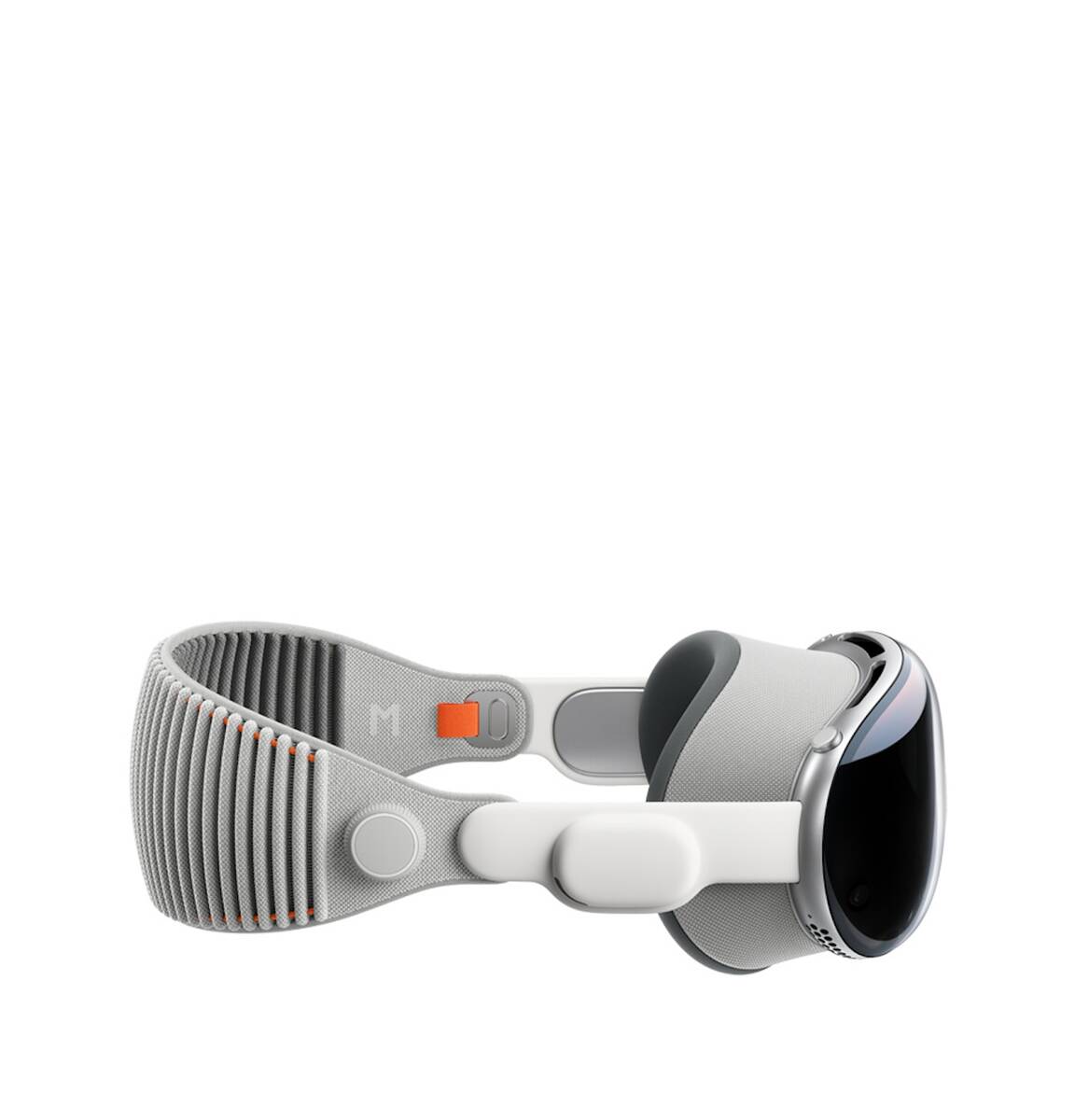5 smart home features for 2025
Smart home technologies can enable homeowners to better enjoy and maintain their living spaces. Here are five innovative smart tech product trends that were featured at local Las Vegas trade shows during the previous year, including CES and the International Builders Show.
No. 5: 3D spatial computing for troubleshooting and maintenance of a home
The factory automation industry has developed interactive “digital twin” models that simulate all the components on a factory floor to track maintenance schedules and flag service requirements.
BILT partnered with Apple to create a similar residential home app for the Vision Pro headset. The augmented reality display and software allow users to visualize all the appliances, furniture and components in their homes within a 3-dimensional viewing space.
Apple calls this approach “spatial computing.”
3D images of each object can be fetched from a menu, rotated, expanded and examined inside-out by the wearer of an Apple Vision Pro, through the interaction of the user’s eye gaze with pinch and stretch hand gestures.
Also attached to each 3D object in the BILT database are additional metadata that include assembly instruction manuals and maintenance guides coupled by text to each image.
Apple Vision Pro users can see through the headset goggles to focus on physical objects within their homes, while using the BILT 3D images and text instructions as augmented-reality guides to assemble or repair their home furniture and appliances.
Additional online information could be searched by using the onboard Siri voice recognition and voice synthesis features of the Apple Vision Pro. Siri could engage the user through a verbal AI chatbot conversation, while a homeowner worked with hand tools to repair a barbecue grill or assemble a computer desk.
Meta and Google are also developing spatial computing applications with headsets that are more like traditional eye glasses.
While Meta has invested heavily in its Quest headset as a platform for virtual reality gaming, the company also introduced Ray-Ban Meta smart glasses with two onboard cameras, internal speakers and a microphone.
Applications for the eyeglasses include the ability to have an ongoing conversation with Meta’s Live AI, translate between languages, and analyze real-time video images in view of the front-facing cameras.
Google’s Project Astra has showcased prototype smart glasses that run on Android XR, a new operating system for vision-based computing. The company’s Gemini AI will be integrated with augmented-reality features that include translation of foreign language scripts.
OpenAI and ChatGPT developers have unveiled an advanced voice mode with vision capability that can analyze images viewed by a camera though a cellphone or on a head-mounted device.
No. 4. Home energy management with smart panels and electrification upgrades
Modernizing an existing home in Southern Nevada to include increased new performance capabilities can put a strain on the existing electric utility service panel and its power-handling capabilities. Home improvements may include solar panels, battery backup systems, electric car chargers, Energy Star appliances, like heat pump dryers and induction cook tops, entertainment systems, LED lighting, smart water conservation and security systems.
The federal Inflation Reduction Act of 2022 encouraged home efficiency upgrades by providing rebates and tax credits to homeowners. The High-Efficiency Electrified Home rebate program allowed up to $4,000 for service panel upgrades and $2,500 for electric wiring improvements. However, these rebates and tax credits may not cover all the costs and labor required by a local utility like NV Energy. A home service panel upgrade may be required to handle a larger electricity load.
One solution that component manufacturers like SPAN and Siemens have provided is an inline load balancer, that is integrated with the circuit breakers in the service panel. An electronic module can intelligently turn off select appliances, such as an electrical vehicle charging station, when it senses that the overall household electrical load requirements are close to exceeding the service panel operating limit. When the household load requirement starts to diminish later in the evening, the load balancer can sense the change and turn back on the power connection to the attached appliance automatically.
Household energy management systems that can be controlled by a mobile phone app have become increasingly important as more electrical and electronic components are integrated into today’s homes. Smart service panels can provide a user-friendly interface between home appliances and the electric utility grid.
No. 3. Rooftop photovoltaic solar panels plus battery energy storage system (BESS)
The sun shines brightly on the Las Vegas Valley about 300 days every year. Some local homeowners have employed photovoltaic solar panels to provide additional power and comfort to their dwelling spaces. But what happens when the sun isn’t shining?
Battery Energy Storage Systems, also known as BESS, are becoming more popular with homeowners and homebuilders who want to harness the power of the desert sun but still have that energy available to the home when the sun isn’t present.
This technology movement is driven by homeowners who want to transition their residences from passive consumers of utility grid electricity to more active home energy generation and management systems.
Homeowners with rooftop solar panels under the NV Energy net-metering program are still guaranteed to receive a minimum of 75 cents for every dollar-equivalent of excess kilowatt power generated by their solar panels, but only when it is fed back to the utility grid.
The grid normally acts like a virtual battery when the sun doesn’t shine, to provide electric power to the home. However, in just the last few years, extreme climate disasters like wildfires, atmospheric river storms and daily temperatures exceeding 100 degrees have left devastating impacts on local utility grids and communities within Western states.
Battery energy storage system manufacturers like Tesla, Enphase, SolarEdge and Franklin WH are integrating batteries into complete subsystems that include inverters, transfer switches and load management devices. These integrated systems can both store and manage the power being generated from rooftop solar panels to actively balance the electricity supply to the residential home and its appliances.
There is a cautionary caveat to introducing fixed BESS systems into a residential home in Nevada. For example, just one Tesla Powerwall system at 13.5 kilowatt-hours is not enough to completely power all the appliances in the home. An HVAC system that runs during hot summer evenings may require three Powerwalls or more to keep it operating for a sustained period of time, in addition to other household appliances, like a refrigerator, washing machine, dryer, dishwasher, electric stove and home entertainment system.
Before installing a rooftop solar power and a fixed BESS system, a homeowner should talk with an experienced and licensed service provider, to evaluate household seasonal electricity usage and annual load calculations. Doing this research in advance ensures that a homeowner will receive a decent return on investment for the purchase of an energy storage system, even with a 30 percent federal tax credit incentive.
The Nevada Solar Association is a group of contractors and associate organizations that work with the Nevada State Contractors Board to provide educational resources to consumers about solar power and BESS system installations, nevadasolarassociation.com.
No. 2. Artificial intelligence
The rollout of the first ChatGPT interactive Large Language Model with inference capabilities by OpenAI during 2023 created an explosion of creativity and imagination, but also some excessive hype.
Artificial intelligence tools with generative capabilities promise increased productivity to every area of human endeavor.
Architects and interior designers have embraced graphics image generators from companies like Midjourney, LookX.AI and PromeAI that make rendering a home design or floor plan easier through the use of interactive sketch prompts.
More complex geometric shapes can be envisioned by using AI algorithms and computational tools. A movement toward parametric architectural design has attempted to come closer to modeling the beauty and intricacy of the natural world.
Smart home management programs like Josh.AI have been featured within The New American Home of 2024 at the Ascaya community in Henderson. Josh.AI includes JoshGPT as a Large Language Model that can interact with its residents by responding to verbal questions and prompts, while learning their daily habits and automatically customizing their living space.
Crestron and Savant are also developing AI stacks of personalized software tools that knit together smart home devices from multiple manufacturers.
Orchestrating an intelligent Internet of Things within a home can be a challenge. Designers should work together with homeowners to avoid making the resulting AI agents too intrusive, nagging or “bossy.” A well-trained AI system should ideally balance customized service and support for home automation systems, while also respecting the privacy and personal security of each resident.
No. 1. Service robots and embodied physical AI
An AI presence within a household has become more familiar and acceptable to homeowners over the last decade, thanks to the introduction of smart audio speakers, autonomous floor cleaners and other intelligent devices that interact with residents’ voices or personal mobile phones.
The Roomba household floor sweeper was one of the first pioneering autonomous home robots, introduced by the iRobot company during 2002.
During November 2024, the ISSA Show North America featured commercial floor-cleaning robots from international companies like Sp’arkoz, Pringle, Puda, Gausium, Nilfisk, Smart Dynamics and i-team. These robots utilized lots of sensors and telematic software, combined with various attachments like rotating sweeper brushes, vacuum cleaners, liquid cleaning fluid dispensers, mops, squeegees and scrubbers.
Many of the robots provided report data to their users about their cleaning progress while adapting to each room environment. Some robots at the ISSA trade show could automatically return to their docking stations to recharge their batteries while dispensing dirty liquids and refilling with fresh cleaning fluids.
OpenAI, Nvidia, Tesla, Boston Dynamics, Agility, Unitree and other companies are striving to create and train humanoid robots with integrated general AI inference and communication abilities.
Aura, a “spokesbot” at The Sphere arena in Las Vegas and Ameca from Engineered Arts have been impressing attendees at local trade shows with human-like mannerisms and engaging conversations.
Beyond information communication and entertainment, other more practical business applications for humanoid robots might be to assist humans on a factory floor, a warehouse, or retail restaurant as autonomous “co-bots” that can perform mundane, repetitive, stressful or boring tasks for people. Design engineers are looking ahead to eventually bring humanoid service robots into the family home.
Two Las Vegas companies have been competing in the “robots-as-a-service” commercial space to automate production, cleaning, delivery and other repetitive tasks that foreshadow eventual adoption into home environments.
Richtech Robotics designs and manufactures robots that have been installed in restaurants, hotels, casinos, senior living homes, factories and retail stores since 2016. Their product lines include robots for delivery, cleaning, security, entertainment and food service.
ADAM is a two-armed barista robot that can mix and serve both coffee and boba drinks, while interacting with customers vocally.
Scorpion is a more edgy bartender and mixologist, whose”tail” is a single robot arm that can mix and serve 20 different cocktails within a smaller workspace. Scorpion’s robot arm includes an embedded camera for visual customer interaction as well as through voice conversation and kiosk commands.
RobotLAB Las Vegas is a robot integrator company that recently opened its doors during November 2024 by hosting a presentation to the local Las Vegas Chamber of Commerce.
Seven different service robots showed off their capabilities while avoiding bumping into each other or their guests.
Autonomous food tray robots worked the crowd, offering snacks, bottled water and business cards while several cleaning robots demonstrated their scrubbing and sweeping capabilities on a cement floor.
Pepper, a semi-humanoid robot manufactured by Softbank, engaged attendees with its four microphones, two cameras, two robot arms, mobile base and a video touch screen to answer questions, tell jokes and “dance” to its onboard music player.
RobotLAB Group, the parent company, has over 15 years of experience as a robot integrator. Its network of 20 local franchises have partnered with top robot manufacturers to place thousands of robots into businesses worldwide.
Franchise staff can provide custom software and artificial intelligence integration on more than 120 different robot hardware devices. The company allows potential customers to test drive a programmable robot inside their operational environment before deciding if they want to purchase it.
RobotLAB Las Vegas also offers robot repair services and technical support to local businesses on behalf of multiple vendors within the existing service robot industry.
During 2025, household consumers will ultimately decide if these five innovative technology trends can provide affordable benefits that enhance the quality of life inside their family homes.


























